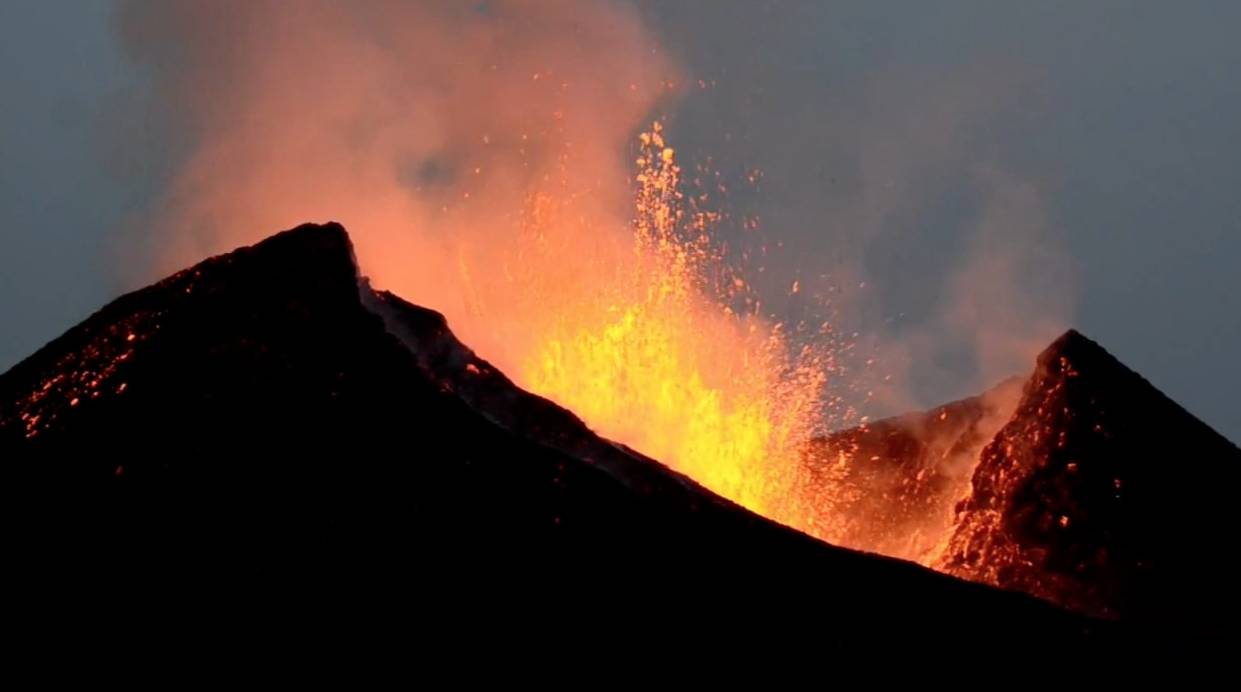- September 24, 2019
- Posted by: Administrator2
- Categories: Congo news, Gorillas, Holiday, uganda gorilla tour, Wildlife safaris

Mount Nyamuragira.
Barry Finlay once remarked, “Every mountain top is within reach if you just keep climbing”. Over hundreds of tourists have visited Africa specifically for mountain climbing.
Even if Africa’s highest peaks; Kilimanjaro Mountain or Rwenzori Mountains are not in the Democratic Republic of Congo, its active volcanoes attract countless travelers to record hiking experiences done on their travel bucket lists.
With the Virunga ranges positioned in this vast D.R. Congo, a series of over eight volcanoes, more than five mountain ranges are positioned in the country. And if it’s a hiking safari, don’t look past DR Congo. One of the most popular mountains hiked is Nyamuragira Mountain.
Nyamuragira is one of the still remaining volcanoes in Africa and the world as a whole. It is one active volcano that has erupted over 40 times since 1885. It’s located within the Mikeno sector in the Virunga National Park; Africa’s oldest national park. This active volcano is indeed vigorous; it has numerously exploded several times since 1850s up to 2012.
Mount Nyamuragira lies just a few kilometers away from Nyiragongo Mountain, they are both still active volcanoes with their lava flowing to the lower valleys. Nyamuragira is a large shield volcano just like Mauna Loa on Hawai’i.
Every after a few years, it produces eruptions often from radial fissures emitting lava that flows kilometers into the sparsely populated area of tropical forest and farmland surrounding it. This mountain is situated about 25 km north of Lake Kivu in the East African Rift Valley and North West of Nyiragongo volcano.
Much as Mount Nyamuragira is still an active volcano, the fact is that it’s not so open to tourists due to its impassable roads and the unpredictable security. Because of this, Mount Nyamuragira has mostly become famous to the researchers who are much interested in information about volcanoes.
After several research programs about this sporty mountain, it is believed that it will erupt again in the next few years after its counterpart Nyiragongo as this happens in sequence. On several occasions, many hikers have failed to reach the top of this active volcano as the temperatures there are routinely below freezing point.
The most recent flank eruption started at Nyamuragira on 6 November 2011, from a series of E-W aligned fissures situated about 10 km east of the top caldera. The eruption started with acute ground fracturing and tall lava cascades from assorted vents, that hurriedly started to build the western Kimanura cone complex.
Lava flows moved many kilometers to the north, setting large areas of forest ablaze, but it didn’t destroy any infrastructure as the area is less populated. Tall spurting lasted about 1 week, blotching from active lava-lake filled vents and explosions.
A second cluster of vents opened about 1 km down-slope on the same fissure system in early January and also produced lava fountains. Another homogeneous complex of vents built up the renowned east Kimanura vent complex.
Undistinguished from the activity of the western complex, lava fountains also merged into a form of intense spattering from piping hot lava lake activity and continued to large lava flows traveling to the north. On 2nd February, the eruption was still continuing.
It seems likely that this eruption positions as one of the volcano´s largest during the past 100 years, both in time and the volume of lava erupted.
There is no way one can fail to recommend any adventurous tourist to this mountain for the unforgettable experiences it creates. You hadn’t thought of Nyamuragira on your African safari, then you didn’t know what adventure is. If it’s an African safari, let it be to Nyamuragira Mountain in the Democratic Republic of Congo.
Leave a Reply
You must be logged in to post a comment.
